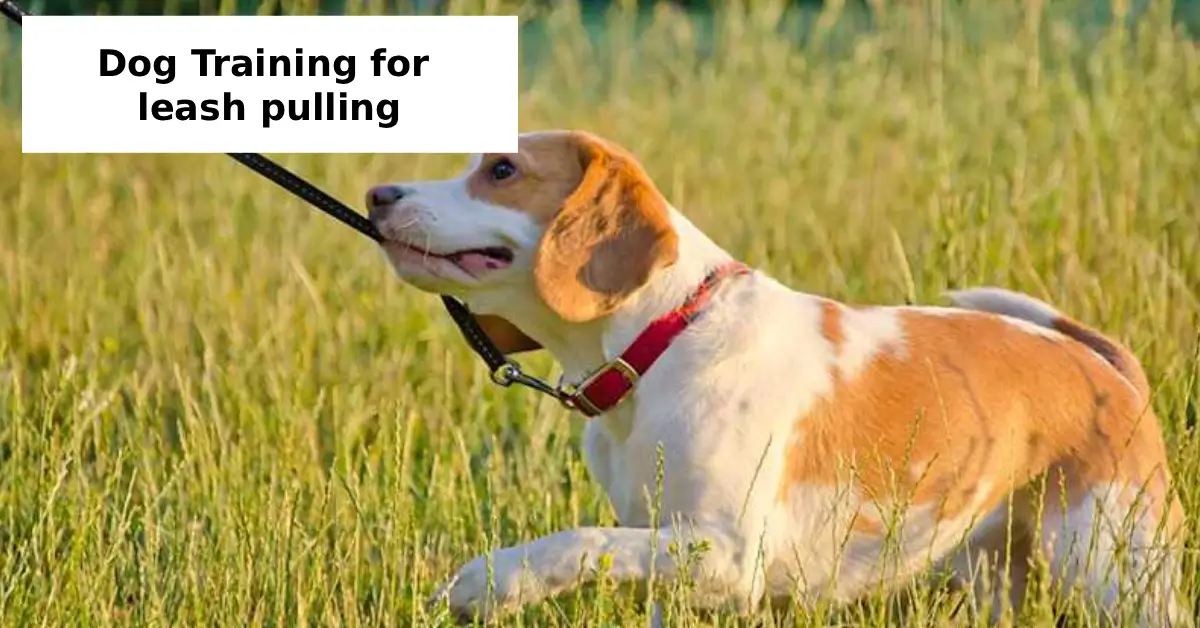Walking your dog should be a joyful, stress-free experience, but for many dog owners struggling with leash pulling, it can quickly become a battle. A dog that lunges forward or constantly tugs can be exhausting, unsafe, and frustrating—especially in busy neighborhoods or crowded parks. The good news? With the right dog training for leash pulling techniques, patience, and consistency, you can transform your daily walks into calm, enjoyable bonding moments.
In this guide, you’ll learn step-by-step dog leash training tips, the best tools to use, and proven behavior-shaping techniques to stop pulling. Whether you’re a new puppy parent in the U.S., a rescue dog adopter, or someone just looking to improve leash manners, this guide will give you expert-backed strategies to succeed.
Why Dogs Pull on the Leash
Before jumping into dog training for leash pulling, it’s important to understand why this behavior happens.
Dogs naturally move faster than humans, and the sights, smells, and sounds during a walk can make them eager to explore. Without proper leash manners for puppies or structured training, this excitement turns into pulling.
Other reasons include:
- Lack of early leash training
- High energy levels without enough exercise
- Fear, anxiety, or overstimulation
- Habit formation due to inconsistent walking rules
For first-time dog adopters and rescue dog owners, pulling can be more pronounced, as the dog might never have learned structured walking before.
Step-by-Step Dog Training for Leash Pulling
1. Choose the Right Equipment
The first step in dog training for leash pulling is having the right tools. Using the wrong leash or collar can make pulling worse or even harm your dog’s neck.
- Best harness for dogs that pull: Front-clip harnesses redirect the dog’s forward momentum without choking them.
- Avoid retractable leashes, as they encourage pulling.
- Use a sturdy 4–6 foot leash for better control.
This is especially important for senior dog owners needing safe walking control or families with children walking dogs, where safety is a top priority.
2. Start Indoors or in a Low-Distraction Area
If your dog pulls heavily outside, begin loose leash walking training inside your home or backyard.
- Attach the leash and reward your dog with treats for staying close.
- Walk a few steps, stop if they pull, and reward again when the leash is slack.
This builds the foundation for calm walking without overwhelming them.
3. Use Positive Reinforcement
Positive reinforcement dog training is one of the most effective methods to stop pulling. Reward your dog for the behavior you want, not just for stopping the unwanted behavior.
Tips:
- Carry small, high-value treats.
- Say “Yes!” or use a clicker the moment your dog walks beside you.
- Give the treat at your side to encourage that position.
For pet owners interested in positive reinforcement methods, this approach creates lasting results without punishment.
4. The “Stop and Stand” Technique
If your dog starts pulling:
- Stop walking immediately.
- Wait until the leash slackens or they return to your side.
- Resume walking and reward calm behavior.
Over time, your dog learns that pulling stops the fun, while walking calmly keeps it going.
5. Change Directions Often
To teach your dog to focus on you, randomly change walking directions.
- Each time you turn, call your dog’s name and reward them for following.
- This keeps them engaged and reduces pulling.
This works well for urban dog owners who walk dogs daily, where distractions are constant.
How to Stop Dog from Pulling on Leash – Quick Fixes
If you need to stop leash pulling fast, here are some quick aids:
- Use a no-pull harness for immediate improvement.
- Shorten the leash slightly for better control.
- Practice short, frequent training walks rather than long, unstructured ones.
While these quick fixes help, remember that consistent training is key for lasting results.
Training Puppies vs. Adult Dogs
Leash manners for puppies are easier to teach because they haven’t formed bad habits yet. Start training as soon as your puppy can safely go outside.
For older dogs or leash training for rescue dogs, expect to spend more time undoing ingrained behaviors. Patience and consistency are crucial here.
Incorporating Obedience Commands
Dog walking obedience tips go beyond just teaching “heel.” Commands like “sit,” “stay,” and “look at me” can help you maintain control during walks.
For example:
- Ask for a “sit” before crossing the street.
- Use “look at me” to regain attention if a distraction appears.
Common Mistakes to Avoid in Dog Training for Leash Pulling
- Inconsistency – Different walking rules from family members confuse the dog.
- Using punishment – Yanking the leash or yelling can cause fear and worsen behavior.
- Skipping exercise – A tired dog is easier to train. Give them time to run or play before training.
- Expecting instant results – Behavior change takes time, especially for first-time dog adopters and rescue dog owners.
Training Dogs in Special Situations
- Special needs dog training: Dogs with mobility, sensory, or anxiety issues may require modified methods, such as gentler harnesses or shorter walks.
- Senior dog owners needing safe walking control: Use lightweight equipment and focus on slow, steady training sessions.
Long-Term Benefits of Loose Leash Walking
Investing time in dog training for leash pulling pays off in many ways:
- Safer, calmer walks for both dog and owner
- Better physical and mental exercise for your dog
- Stronger bond between you and your pet
- Reduced risk of injury for both parties
For families with children walking dogs, well-trained leash manners also mean fewer accidents and more enjoyable outdoor time together.
Final Tips for Success
- Keep training sessions short (5–10 minutes) to maintain your dog’s focus.
- Gradually increase distractions as your dog improves.
- Celebrate small wins—every step towards calmer walking counts.
- Practice daily, even if just for a few minutes.
Conclusion
Dog training for leash pulling isn’t just about stopping a bad habit—it’s about building trust, communication, and safety during walks. With patience, the right equipment, and positive reinforcement dog training methods, you can transform frustrating leash battles into peaceful strolls. Whether you’re working with a playful puppy, a strong adult dog, or a rescued companion, these techniques will help you train your dog to walk beside you confidently and happily.
For dog trainers and pet sitters in the U.S., mastering these techniques can also enhance your professional services and client satisfaction. Remember, a well-trained dog is not only a joy to walk but also a safer, happier companion for life.






1 thought on “The Ultimate Guide to Training Your Dog to Stop Leash Pulling”